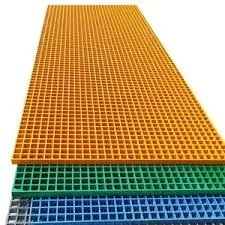
-
 Afrikaans
Afrikaans -
 Albanian
Albanian -
 Amharic
Amharic -
 Arabic
Arabic -
 Armenian
Armenian -
 Azerbaijani
Azerbaijani -
 Basque
Basque -
 Belarusian
Belarusian -
 Bengali
Bengali -
 Bosnian
Bosnian -
 Bulgarian
Bulgarian -
 Catalan
Catalan -
 Cebuano
Cebuano -
 China
China -
 China (Taiwan)
China (Taiwan) -
 Corsican
Corsican -
 Croatian
Croatian -
 Czech
Czech -
 Danish
Danish -
 Dutch
Dutch -
 English
English -
 Esperanto
Esperanto -
 Estonian
Estonian -
 Finnish
Finnish -
 French
French -
 Frisian
Frisian -
 Galician
Galician -
 Georgian
Georgian -
 German
German -
 Greek
Greek -
 Gujarati
Gujarati -
 Haitian Creole
Haitian Creole -
 hausa
hausa -
 hawaiian
hawaiian -
 Hebrew
Hebrew -
 Hindi
Hindi -
 Miao
Miao -
 Hungarian
Hungarian -
 Icelandic
Icelandic -
 igbo
igbo -
 Indonesian
Indonesian -
 irish
irish -
 Italian
Italian -
 Japanese
Japanese -
 Javanese
Javanese -
 Kannada
Kannada -
 kazakh
kazakh -
 Khmer
Khmer -
 Rwandese
Rwandese -
 Korean
Korean -
 Kurdish
Kurdish -
 Kyrgyz
Kyrgyz -
 Lao
Lao -
 Latin
Latin -
 Latvian
Latvian -
 Lithuanian
Lithuanian -
 Luxembourgish
Luxembourgish -
 Macedonian
Macedonian -
 Malgashi
Malgashi -
 Malay
Malay -
 Malayalam
Malayalam -
 Maltese
Maltese -
 Maori
Maori -
 Marathi
Marathi -
 Mongolian
Mongolian -
 Myanmar
Myanmar -
 Nepali
Nepali -
 Norwegian
Norwegian -
 Norwegian
Norwegian -
 Occitan
Occitan -
 Pashto
Pashto -
 Persian
Persian -
 Polish
Polish -
 Portuguese
Portuguese -
 Punjabi
Punjabi -
 Romanian
Romanian -
 Russian
Russian -
 Samoan
Samoan -
 Scottish Gaelic
Scottish Gaelic -
 Serbian
Serbian -
 Sesotho
Sesotho -
 Shona
Shona -
 Sindhi
Sindhi -
 Sinhala
Sinhala -
 Slovak
Slovak -
 Slovenian
Slovenian -
 Somali
Somali -
 Spanish
Spanish -
 Sundanese
Sundanese -
 Swahili
Swahili -
 Swedish
Swedish -
 Tagalog
Tagalog -
 Tajik
Tajik -
 Tamil
Tamil -
 Tatar
Tatar -
 Telugu
Telugu -
 Thai
Thai -
 Turkish
Turkish -
 Turkmen
Turkmen -
 Ukrainian
Ukrainian -
 Urdu
Urdu -
 Uighur
Uighur -
 Uzbek
Uzbek -
 Vietnamese
Vietnamese -
 Welsh
Welsh -
 Bantu
Bantu -
 Yiddish
Yiddish -
 Yoruba
Yoruba -
 Zulu
Zulu
grp car
The Rise of GRP Cars Innovations and Sustainability in the Automotive Industry
In recent years, the automotive industry has undergone significant transformations, driven by the need for more sustainable practices and innovative technologies. Among the various advancements, the emergence of Glass Reinforced Plastic (GRP) cars stands out. This article explores the benefits, advancements, and future potential of GRP cars, highlighting their importance in a rapidly changing world.
GRP, also known as fiberglass, is a composite material made from a polymer matrix reinforced with glass fibers. This combination provides a unique set of properties, including high strength-to-weight ratio, corrosion resistance, and design flexibility. The automotive sector has begun to embrace GRP for various applications, from body panels to interior components, due to its lightweight nature and durability.
.
Additionally, GRP offers design freedom that traditional materials like steel and aluminum cannot match. Automotive designers can create more complex shapes and structures, leading to aerodynamically efficient designs that enhance vehicle performance. This flexibility extends to both aesthetics and functionality, allowing for innovative designs that appeal to consumers while also improving safety features.
grp car

The production process of GRP components also has environmental benefits. Compared to traditional materials, GRP production often generates less waste and requires less energy, making it a more sustainable option. Furthermore, advancements in recycling technologies are paving the way for the reuse of GRP materials, further reducing the environmental impact of automotive manufacturing.
Several manufacturers are already incorporating GRP into their vehicles. Electric vehicle (EV) makers, in particular, have started utilizing GRP to offset the weight of heavy batteries, helping to enhance the range and efficiency of their cars. The combination of GRP with electric technology signifies a promising direction for the automotive industry, aligning with global goals for greener mobility solutions.
Looking ahead, the potential for GRP cars is vast. As research continues into further enhancing the properties of GRP and expanding its applications in automotive design, we can expect to see more manufacturers adopting this material. The growing consumer awareness of sustainability in vehicle choices will further drive this trend.
In conclusion, GRP cars represent a significant step forward in the automotive industry, combining innovation, sustainability, and performance. As the world moves towards more eco-friendly transportation solutions, GRP will undoubtedly play a crucial role in the future of automotive design and manufacturing, ensuring that the industry continues to evolve responsibly and efficiently.









